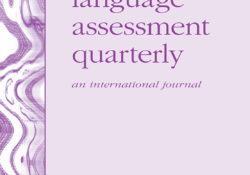tandfonline.com har udgivet en rapport under søgningen “Teacher Education Mathematics”: ABSTRACT ABSTRACT Reading comprehension is often treated as a multidimensional construct. In many reading tests, items are distributed over reading process categories to represent the subskills expected to constitute comprehension. This study explores (a) the extent to which specified subskills of reading comprehension tests are conceptually conceivable to teachers, who score and use national reading test results and (b) the extent to which teachers agree on how to locate and define item difficulty in terms of expected text comprehension. Eleven teachers of Swedish were asked to classify items from a national reading test in Sweden by process categories similar to the categories used in the PIRLS reading test. They were also asked to describe the type of comprehension necessary for… Continue Reading →
Like this:
Like Loading...
eric.ed.gov har udgivet: This paper presents partial results of a completed study which investigated the experience of teaching mathematics content courses to preservice elementary teachers. Interviews with ten mathematics instructors who teach these courses revealed several major tensions, including one that arises as instructors strive to set priorities and balance their affective and cognitive goals for their students. An analysis of three of the instructors’ experiences of this particular tension will provide insight into the factors that contribute to it and how it is managed. [For the complete proceedings, see ED584829.] Link til kilde
Like this:
Like Loading...
tandfonline.com har udgivet en rapport under søgningen “Teacher Education Mathematics”: Abstract Abstract This article examines the integration of cognitive psychology research and technology within existing frameworks of statistics course design and implementation for a sequence of flipped graduate-level courses. Particular focus is the use of the principles of spacing and retrieval practice within the flipped classroom format as strategic approaches to curriculum design and instructional delivery within and across courses. The reporting of student perceptions regarding their engagement in learning, statistical thinking and practice, and course components that contributed to their learning serves to shed light on ways educators can bridge theory to practice in statistics education at the graduate-level. Link til kilde
Like this:
Like Loading...
eric.ed.gov har udgivet: How does the mind work–and especially how does it learn? Teacher’s instructional decisions are based on a mix of theories learned in teacher education, trial and error, craft knowledge, and gut instinct. Such knowledge often serves teachers well, but is there anything sturdier to rely on? Cognitive science is an interdisciplinary field of researchers from psychology, neuroscience, linguistics, philosophy, computer science, and anthropology who seek to understand the mind. In this regular “American Educator” column, we consider findings from this field that are strong and clear enough to merit classroom application. This month’s issue discusses math anxiety. Math anxiety is not limited to a minority of individuals nor to one country. International comparisons of high school students show that some students in every country are anxious about… Continue Reading →
Like this:
Like Loading...

